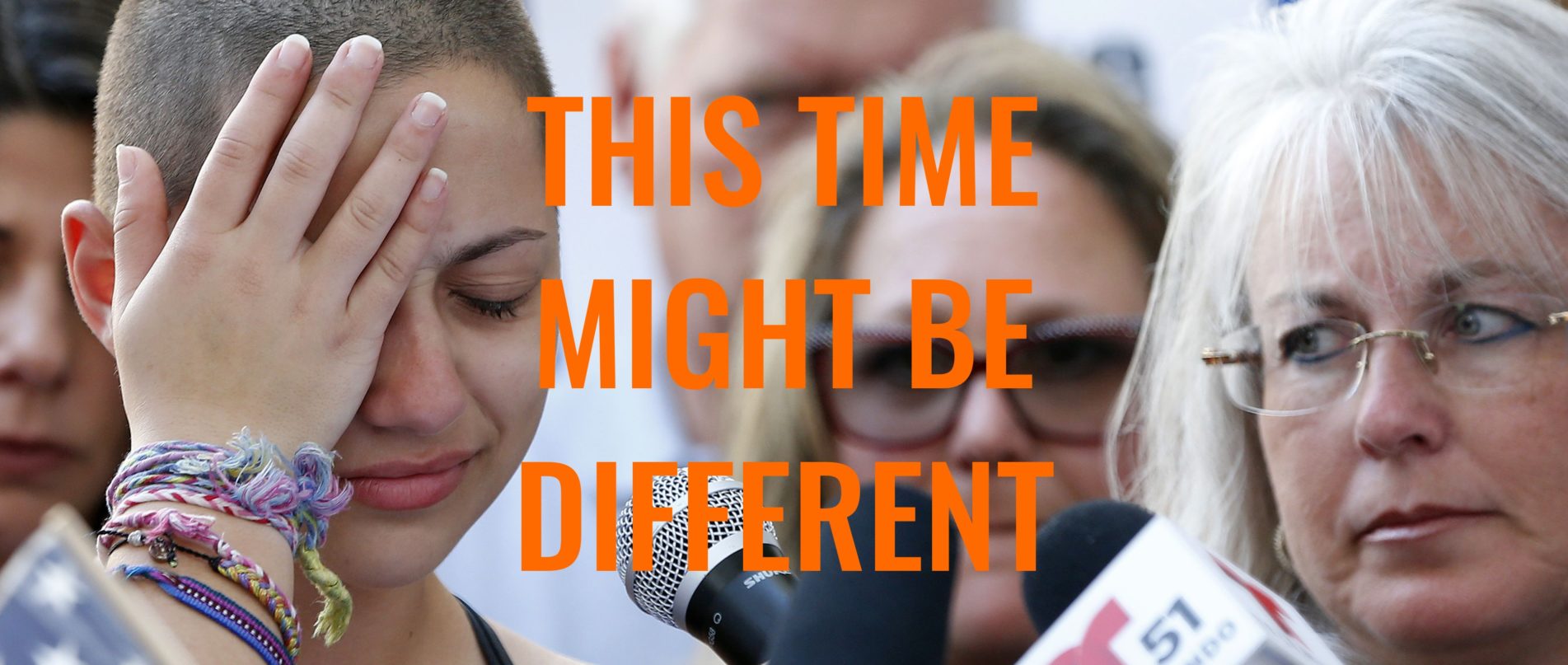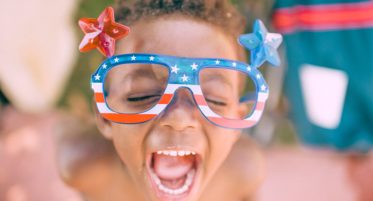
Prompt Images
After the devastation of another mass shooting, it can often feel as though there’s nowhere to turn. The pain, loss, shock, and anger are overwhelming. America has been through this dangerous cycle dozens of times, most of which have occurred in my lifetime.
So this time, in the wake of the events at Parkland, Florida, I’m going to turn to somewhere which lends me solace, context, and clarity—to history, more specifically, the power of images in times of change.
From propaganda in Nazi Germany and the United States to the striking photographs that captured everyday tragedy, the news media’s depiction of World War II delivered the horrors of war to American households. Jumping ahead another 15 years, television brought the first presidential debate to American living rooms.
The Power of Media
The Presidential Debate between John F. Kennedy and Richard Nixon is one of the most famous instances of how the media impacted public perceptions. The most significant revelation in this case is that those who listened to the debate on the radio tended to believe that Nixon won. TV viewers, on the other hand, gave the win to Kennedy, being swayed by Kennedy’s good looks and presentation, and turning away from Nixon’s infamous sweat.
Other moments of the Kennedy era were televised as well, including JFK’s assassination, the killing of Lee Harvey Oswald, and the chaotic aftermath of Robert Kennedy being shot in the Ambassador Hotel. A picture may be worth a thousand words, but access to moving pictures colored the tone of the nation for decades to come.
TV also compelled public opinion during the Vietnam War. Walter Cronkite’s somber addresses and the horrific, brutal images from an unwinnable war stoked outrage and led to massive protests. Domestically, images of the race riots and unrest in the South during the Civil Rights Movement also forced the hand of lawmakers to address the injustices of Jim Crow laws.
Countless examples throughout history demonstrate that when people—civilians and lawmakers alike—see examples of destruction and violence with their own eyes, progress happens.
Today, social media plays an increasingly significant role in civil upheaval. Twitter’s role in the Arab Spring, Occupy Wall Street, and the #BlackLivesMatter movement are just a few examples of newer forms of media impacting social change and broadcasting the reality of a serious, and sometimes deadly, issue.
Powerlessness Against School Shootings
The shooting at Columbine High School is considered an obvious catalyst for the epidemic of shootings in the United States, since the massacre occurred in 1999. Since then, many things have changed. For one, school shootings were not a frequent, seemingly inevitable occurrence.
But the media has changed as well. Today’s media landscape is nearly unrecognizable from 1999’s, both in the type of content and how we consume it. And yet, there has been no national legislative action.
Cell phones were nowhere near as prevalent in 1999, but have reached ubiquity in 2018. Video footage has come out from the shootings in Las Vegas, Orlando, and Aurora, just to name a few. So why no change? Why has there been no political will to change gun laws, even when we can see and hear the horrors they inflict? What is the breaking point?
Parkland, Florida Teenagers Demand Change
In spite of the terrifying, painfully tragic events at Marjory Stoneman Douglas High School, it is my hope that since teenagers were sending images through Twitter and Snapchat of the Parkland school shooting—live, in real time—that those pieces of media will incite change.
Screenshots of texts with their parents and friends about how scared they were, demonstrating their confusion and panic, circulated on social media and in the news. These very real reminders of the nature of the tragedy add an element that’s missing from the portrayal of violence by news media through history: the personal. The images came from the students themselves. They bravely shared their emotions and fears with the world, not knowing if they were going to survive. Their vulnerability and self awareness helped to save lives, and I hope they can save more in the future.
In addition to the personal nature of the photos and videos, the survivors have brought forth a kind of aggressive and immediate activism that feels different than other shootings. These kids—and yes, they’re kids—are angry. Rightfully angry, after watching their friends and teachers die and knowing the inaction from the government that comes after. They’re calling people out. They’re saying names. And they may have been scared when they sheltered in place or when they ran out of the school in terror, but that opened their eyes and altered their perspective. Because they sure aren’t scared now.
These teenagers want to break the cycle, and with their highly emotional speeches, tweets, and stories, I think they genuinely have a chance.
It’s easy to turn away from statistics and numbers. Sure, you can show a person statistics about Australia and England and Japan’s significant drop in mass shootings after gun control legislation was passed. You can tell a person that there are more guns than humans in the United States. But numbers aren’t the same as seeing kids huddled together in closets or behind barricades of desks. They’re not the same as life-or-death texts between parent and child.
The teens from Florida know the power of their documentation. These Gen Z-ers know how to use social media, and they know how to directly hold people accountable. They’ve been tweeting at Trump, Republican lawmakers, the NRA, the GOP, Tomi Lahren, and anyone else who attempts to belittle or minimize their pain and experience. The Florida teens know that this fight has been politicized for so long that they’re not afraid to hold back, and their organization and mission to not let their friends, classmates, and teachers die in vain is gut wrenchingly admirable.
I’m inspired by their audacity and their spirit. And I’m excited to join them in the fight for sensible gun control.



